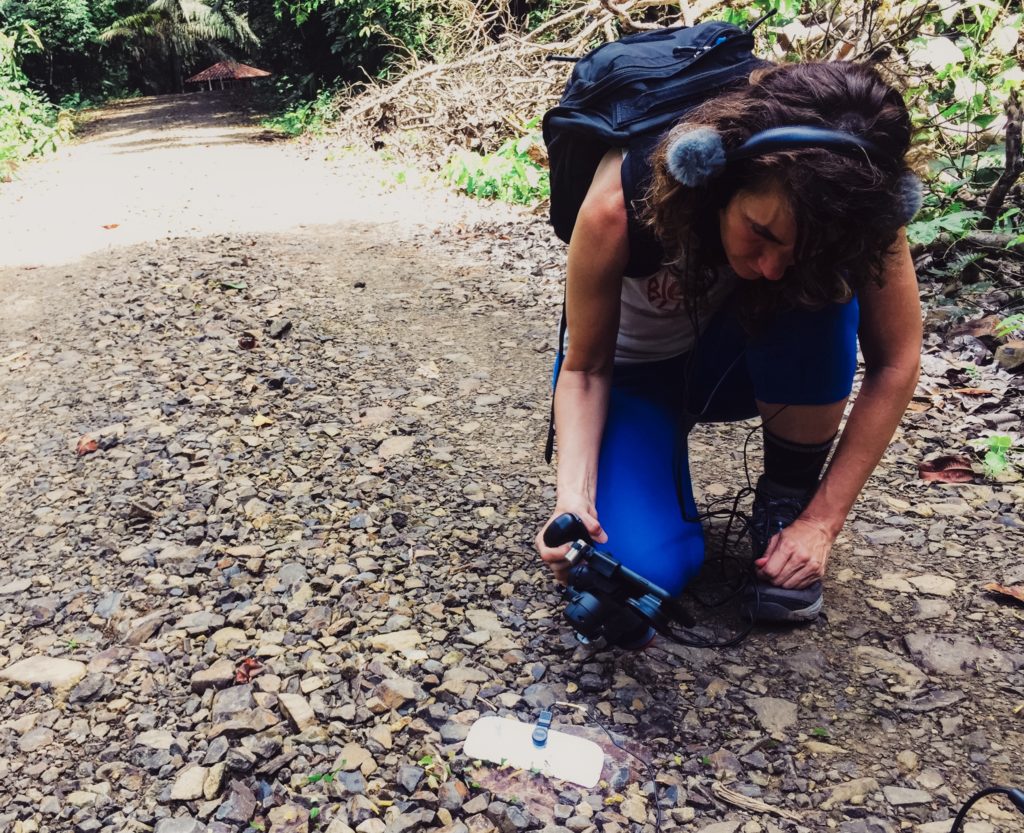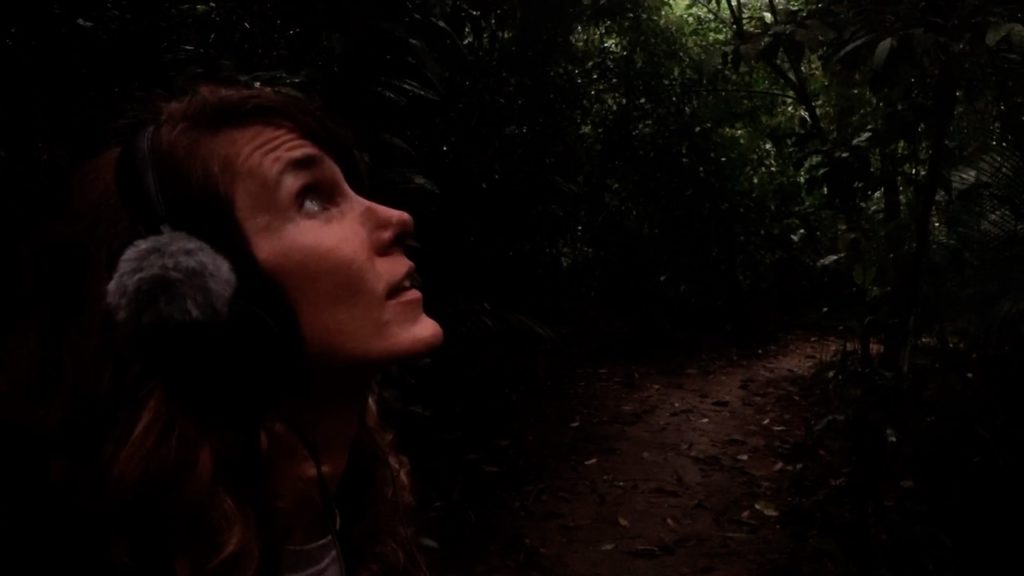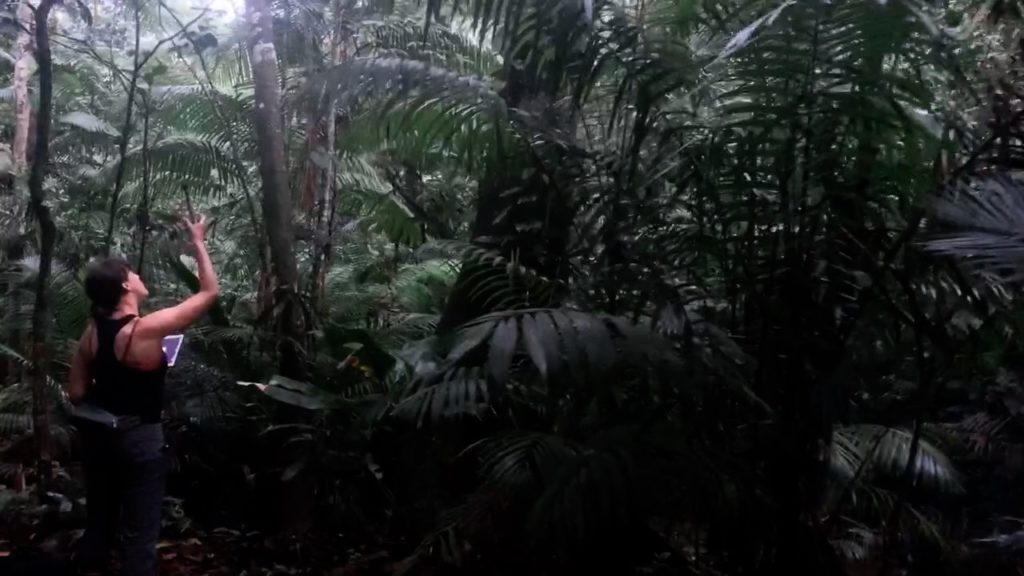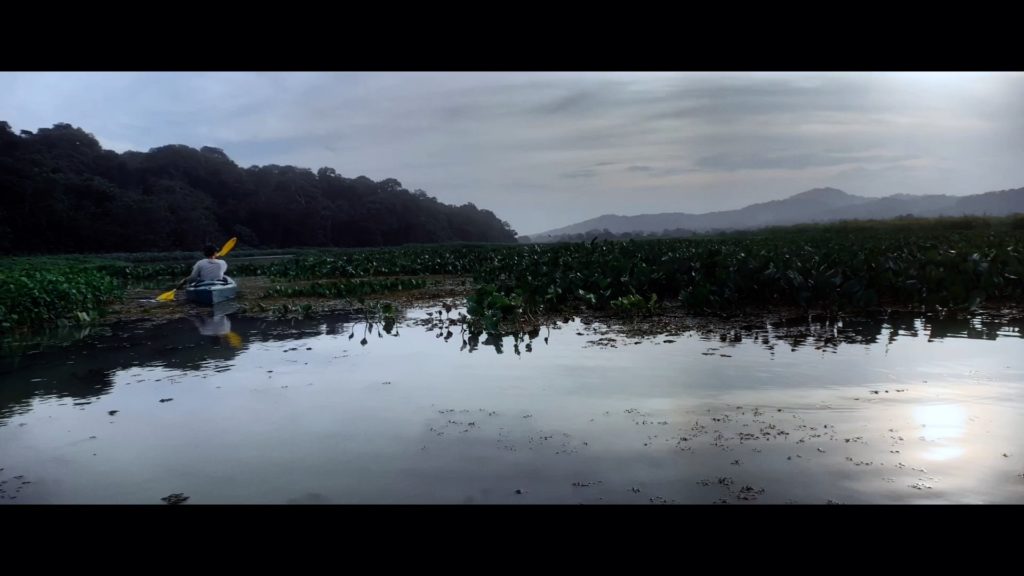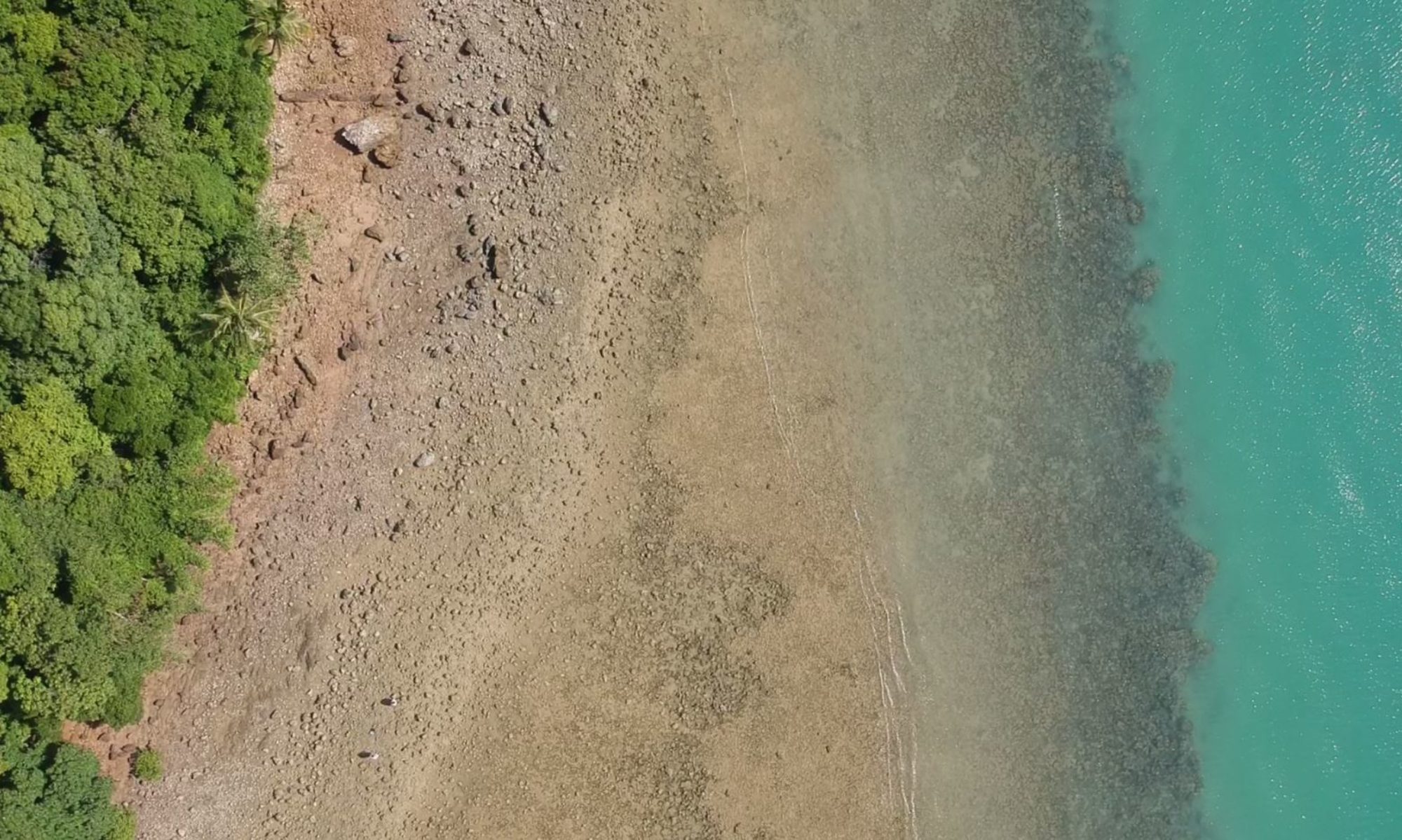I wanted to capture what it feels like to wander in the forests of Gamboa during both the sunset and evening choruses. Once I spent a little time on the Rio Charges I decided to weave that into the mix as well.
Binaural recordings imitate the spatial dimensions of human hearing. In other words, they reproduce sound the way we actually hear it. Because of this, listening to binaural recordings works best with headphones.
The microphones I used are designed specifically for quiet environments and I found the noise level of the evening chorus on Laguna Trail was enough to occasionally blow out the mics.
The audio was recorded in tandem with the video, so I moved both camera and mics (since they were attached to my ears) in whatever direction I was looking. This way, when I turn, the viewer hears the sound of the howlers from behind just as I did, whereas a moment before they were to the left, etc.
I wanted to convey the experience of sonic density in contrast to how little we actually see with our eyes in these environments, and to explore the idea that listening would have been important for our ancestors in wildly different ways than it is for us in most situations in modern cities or suburbs. Our relationship to sound has lost much of the meaning it once had and understanding it required. In cities we primarily filter out “noise” whereas, in the forest, we lean in and listen to understand what is around us.
For example, acoustic ecologist Gordon Hempton found that human hearing range is a perfect match for birdsong – that birds are indicators of a habitat that would be prosperous for human survival. He states that hearing is vital for all animals’ survival, and the bandwidth from 2.5 to 5 kHz are the resonant frequencies where we have super-senstive hearing – which is a perfect match for birdsong.
I’ve only made it through about 25% of what I recorded so I’ll continue to post more to my Vimeo page that will include other parts of Gamboa and the surrounding areas.
The collaborative project I did with Lisa Schonberg involved combining technologies to enable others to experience the ecosystems in Gamboa from new perspectives. We made two videos. The first of leaf-cutter ants combined substrate-borne stridulations and locomotion on Pipeline Road with binaural ambient sound. The second was filmed underwater in the Rio Chagres and uses a combination of hydrophone and iPhone recording above and under water.
In the Rio Charges, while putting my iPhone in the water to film, I discovered that many small fish were interested in sucking at my skin. I ended up playing with them for quite a long time, as the fish didn’t react much to me scooping them into my hand. Playing in the water reminded me a lot what I felt like as a kid when I’d hang out at the edge of the pond near my house. I decided to make the video from that perspective – an intimate, playful view of the world just below the surface of the water.- wonder and curiosity being two of the greatest assets of art/sci/tech folks.
